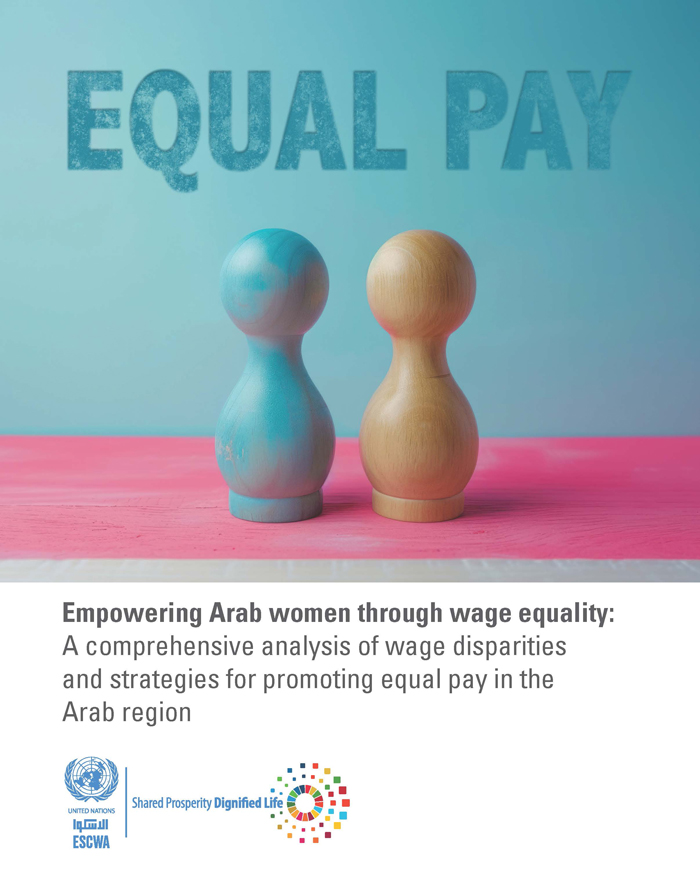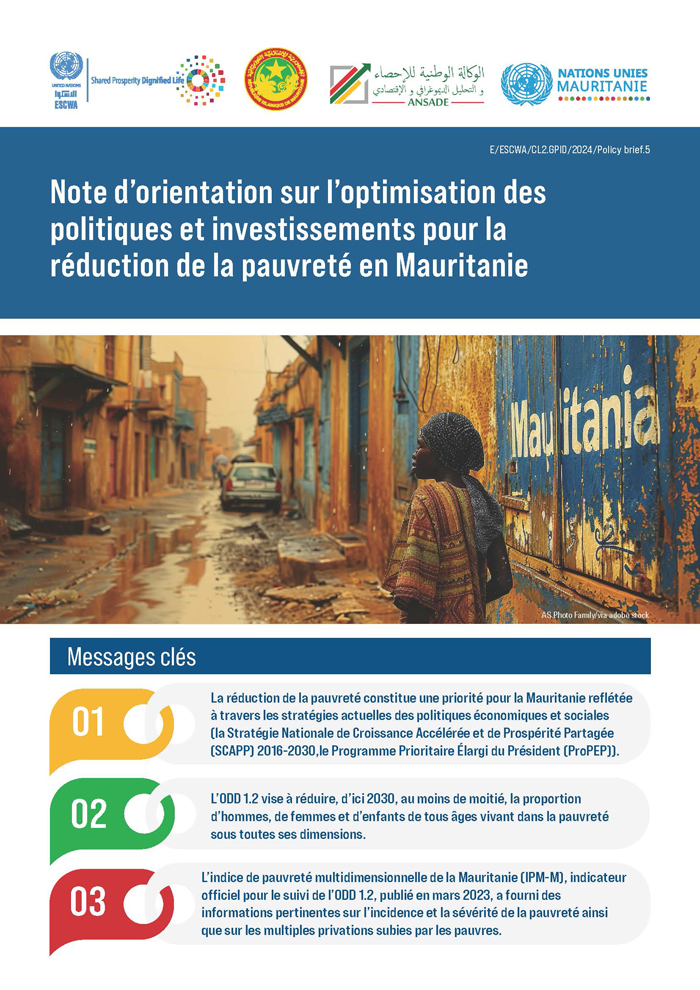
ESCWA Publication: E/ESCWA/CL2.GPID/2025/TP.1
Country: Arab region, People’s Democratic Republic of Algeria, Arab Republic of Egypt, Republic of Iraq, Hashemite Kingdom of Jordan, Kingdom of Morocco, Republic of Sudan, Republic of Tunisia, United Arab Emirates, Republic of Yemen
Publication Type: Information material
Cluster: Gender Justice, Population and Inclusive Development
Focus Area: Gender equality, Inclusive development, Future of employment, Statistics
Initiatives: Gender statistics, Reducing inequalities, Women’s economic empowerment, Job creation
SDGs: Goal 5: Gender Equality, Goal 8: Decent Work and Economic Growth, Goal 10: Reduced Inequalities
Keywords: Algeria, Analysis of variance, Arab countries, Data analysis, Egypt, Empowerment, Equal pay, Gender discrimination, Gender equality, Iraq, Jordan, Labour law, Morocco, Recommendations, State of palestine, Statistical data, Sudan, Tunisia, United arab emirates, Wage policy, Women workers, Workforce, Yemen
Empowering Arab women through wage equality: A comprehensive analysis of wage disparities and strategies for promoting equal pay in the Arab region
January 2025
The study explores wage disparities in the Arab region, highlighting significant gender-based differences in earnings. AnalySing data from seven Arab countries – Egypt, Jordan, the State of Palestine, the Sudan, Tunisia, Yemen, and Iraq – the study uses the Oaxaca-Blinder decomposition method to quantify the wage gap attributable to discrimination. The results indicate that while education and professional experience significantly improve women’s earnings, systemic discrimination remains a persistent barrier to wage equality. On average, Arab women earn 89 cents for every dollar earned by men, a figure that decreases to 82 cents after adjusting for factors such as education, job type and experience. The study also identifies cultural norms, occupational segregation and inconsistent enforcement of equal pay laws as factors exacerbating the gender wage gap in the region. To address these challenges, the study contains various targeted policy recommendations, including enhancing wage transparency, investing in education, enforcing equal pay legislation, and increasing women's representation in leadership roles. These strategies are essential for promoting gender wage parity, ensuring decent work for Arab women, and advancing their economic empowerment.
Related content
Gender equality
, Inclusive development
, Future of employment
, Statistics
,
The study explores wage disparities in the Arab region, highlighting significant gender-based differences in earnings. AnalySing data from seven Arab countries – Egypt, Jordan, the State of Palestine, the Sudan, Tunisia, Yemen, and Iraq – the study uses the Oaxaca-Blinder decomposition method to quantify the wage gap attributable to discrimination. The results indicate that while education and professional experience significantly improve women’s earnings, systemic discrimination remains a persistent barrier to wage equality. On average, Arab women earn 89 cents for every dollar earned by men, a figure that decreases to 82 cents after adjusting for factors such as education, job type and experience. The study also identifies cultural norms, occupational segregation and inconsistent enforcement of equal pay laws as factors exacerbating the gender wage gap in the region. To address these challenges, the study contains various targeted policy recommendations, including enhancing wage transparency, investing in education, enforcing equal pay legislation, and increasing women's representation in leadership roles. These strategies are essential for promoting gender wage parity, ensuring decent work for Arab women, and advancing their economic empowerment.



